Reducing the threat of termites is easy!
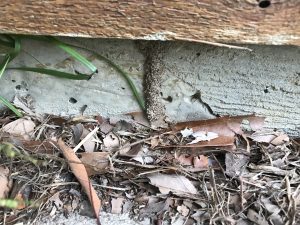
Termites pose major problems affecting Australian homeowners. The statistics are alarming. The CSIRO puts this risk at 1 in 4 homes. Northern N.S.W and The Gold Coast Homes are at a high risk due to the species of termite in the area that can cause devastating damage to homes and also the building design of homes that allow undetected entry leading to damage. Other factors contributing to this risk are the materials used in construction.
A common question is what do I do to protect my home against termites?
Firstly, To answer this question a general understanding is needed of building and slab type, Age, The risk factor of “Undetected” Termite Entry, Location of the property, The conducive conditions to a termite attack and any signs that the house has had measures put in place to protect your home against termites.
Undetected Termite Entry
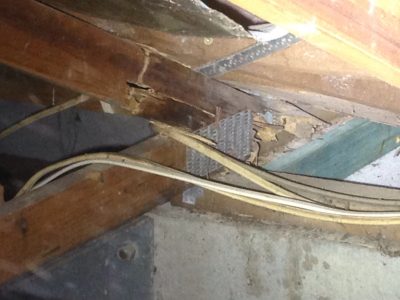
Undetected Termite Entry. The word undetected plays a huge role in Termite Management. Undetected Termite Entry is the ability for termites to enter your home undetected. Termite management building codes have changed and the Industry adopted this phrase “Undetected Termite Entry” as it is a major issue. Thus, changing now how we build houses and protect houses against undetected termite entry. In the past, we relied heavily on chemicals. Now the focus is on physical barriers to stop “undetected termite entry” enabling us to identify termites entering the building via exposure to prevent unseen internal termite entry leading to unknown activity and damage caused by termites.
The Big Change in the Industry
2001 and the late 90s had a huge change in termite management. The focus was to not rely on strong chemicals to repel termites away from under the slab. The focus was to adopt a slab design acting as a barrier so termites expose themselves upon entry. The use of chemicals was effective, however, they were detrimental to the environment and also have a life span. Houses built before 2001 with an infill slab are at a High Risk of undetected termite entry due to chemical expiry and slab design.
Slab Design
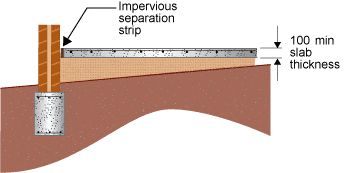 Infill Slab – An infill slab is a slab design at high risk of undetected termite entry with no protection. The reason is that 3 elements of the slab the footing, the brickwork abutting the footing underground and the slab itself are concealed. Over time, cracking or movement can occur to building elements including brickwork and areas where these 3 elements are joined. This cracking can allow undetected termite entry. Another area can be service penetrations ie plumbing pipes, electrical etc.
Infill Slab – An infill slab is a slab design at high risk of undetected termite entry with no protection. The reason is that 3 elements of the slab the footing, the brickwork abutting the footing underground and the slab itself are concealed. Over time, cracking or movement can occur to building elements including brickwork and areas where these 3 elements are joined. This cracking can allow undetected termite entry. Another area can be service penetrations ie plumbing pipes, electrical etc.
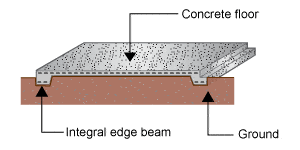
Slab On Ground – A slab on ground design reduces the risk of undetected termite entry as so termites will expose themselves on the external slab edge upon an annual inspection. A Modern slab on the ground must have protection to the penetrations of the slab, and to the perimeter if brickwork is in ground contact. Physical termite barriers are installed into buildings after 2001 and in some cases before to protect against undetected entry. To see if your house has adequate measures to protect your home against termites check the meter box or under the kitchen sink for a durable notice. Types of physical termite barriers include Kordon.
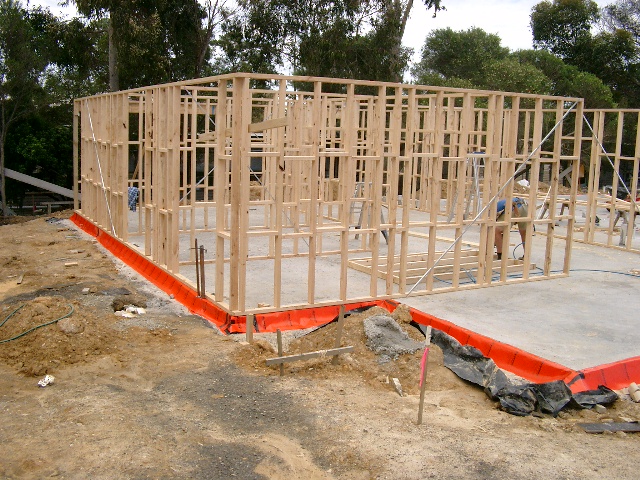
The Orange Kordon Termite Barrier Installed At Pre-Construction Stages On A Modern Home.

Termite lead exposed over a slab on ground slab edge.
The Risk Involving Location
Below is a map outlining Termite risk areas. Northern N.S.W and The Gold Coast are at a very high risk of termite attack due to the species present within this area that can cause structural damage to buildings. The CSIRO puts this risk at 1 in 4 houses located in high-risk zones.
As we have discussed, Buildings built after 2001 have measures in place to stop “Undetected Entry” so an annual termite inspection is essential to protect your home against termites. The importance of these inspections are vital and in some case, these inspections if not carried out will void any warranty that is in place covering your home and the system installed to stop undetected entry. If your home was built pre 2001 and has no termite protection and the risk of undetected termite entry is high, it is recommended a termite management system is installed, Protecting your Home Against Termites.
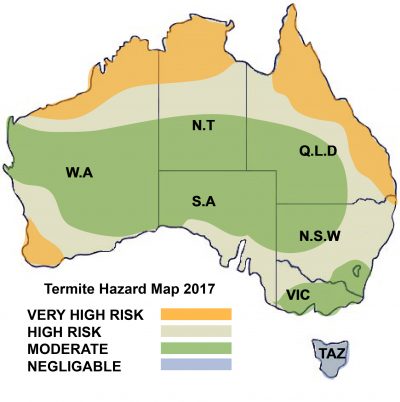
Some High-Risk examples
1980s Brick veneer house located in Northern N.S.W surrounded by gum trees with radiata pine framing. Brick home on the Gold Coast with evidence of drill holes from a previous treatment and no certificates. 1970s Coastal Brick home with an attachment installed before 2001. House on piers with no ant capping and renovations or attachments with no evidence of a termite management system Also, Pre 2001, a Split level house in the high-risk zone with no evidence of termite management. Also, Any house built after 2001 with no termite protection evident. Or obstructions against the slab edge. Other common issues are owner builder renovations not certified.
Protection and risk reduction
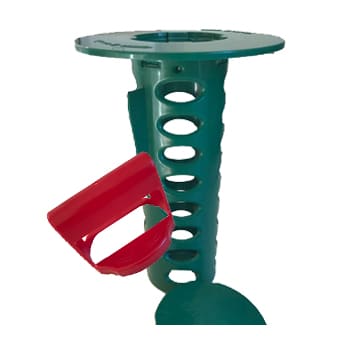
Modern termite baiting systems are non-toxic
Most importantly and regardless of age, all houses with timber elements must have annual inspections in high-risk areas. It’s like servicing your car, however, more important if you look at the figures, A house is worth a lot more than a car. Protecting your home against termites starts with an Inspection.
Building and pest inspection gold coast

